-
 bitcoin
bitcoin $114320.977035 USD
-0.40% -
 ethereum
ethereum $4152.439985 USD
-1.75% -
 tether
tether $1.000111 USD
-0.04% -
 xrp
xrp $2.843037 USD
-1.63% -
 bnb
bnb $1013.349380 USD
-1.62% -
 solana
solana $208.362767 USD
-2.10% -
 usd-coin
usd-coin $0.999783 USD
0.00% -
 dogecoin
dogecoin $0.232559 USD
-1.00% -
 tron
tron $0.333491 USD
-1.09% -
 cardano
cardano $0.806310 USD
0.19% -
 hyperliquid
hyperliquid $45.023720 USD
-1.59% -
 ethena-usde
ethena-usde $1.000819 USD
-0.06% -
 chainlink
chainlink $21.241249 USD
-2.11% -
 avalanche
avalanche $30.035416 USD
-0.66% -
 stellar
stellar $0.364984 USD
-2.05%
How to add a custom token to your Trezor wallet?
Add custom tokens in Trezor Suite by entering the correct contract details, ensuring secure offline storage while viewing balances for ERC-20, BEP-20, or similar tokens.
Sep 15, 2025 at 09:18 am
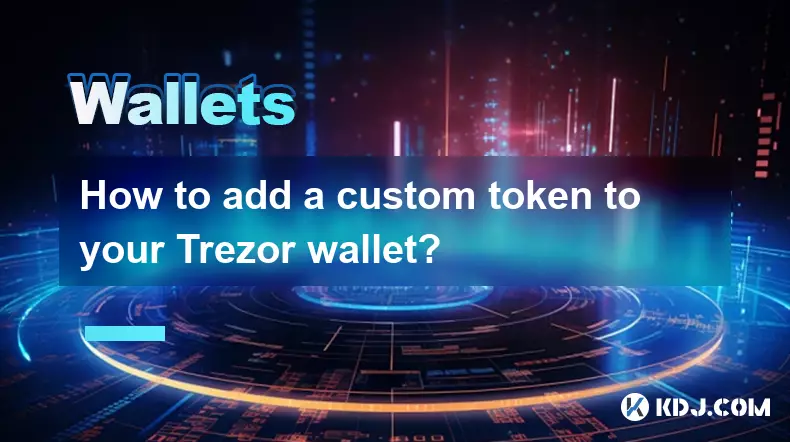
Understanding Custom Tokens in Trezor Wallet
1. Trezor hardware wallets support a wide range of cryptocurrencies, but not all tokens are automatically listed in the interface. Users often need to manually add custom tokens, especially those issued on networks like Ethereum, Binance Smart Chain, or Polygon. These tokens typically follow standards such as ERC-20, BEP-20, or similar, and require specific contract details for integration.
2. Adding a custom token allows users to view their balance and manage holdings directly within the Trezor Suite interface. This is particularly useful for investors holding lesser-known or newly launched tokens that have not yet been officially integrated into the wallet’s default list.
3. Before proceeding, ensure your Trezor device is updated to the latest firmware version. Older versions may lack support for certain networks or token standards, which could prevent successful addition or accurate display of balances.
4. The process does not involve storing private keys or sensitive data on external servers. Since Trezor operates as a cold wallet, the actual signing of transactions remains securely offline. Adding a token only configures the software interface to recognize the token’s contract address and symbol.
Steps to Add a Custom Token
1. Connect your Trezor device to your computer and open the official Trezor Suite application via the web browser. Make sure you are accessing the legitimate website (suite.trezor.io) to avoid phishing risks.
2. Navigate to the account for the blockchain network where the token exists—such as Ethereum or Binance Smart Chain. Click on “Show balance” and then select “Manage tokens” from the dropdown menu located in the assets section.
3. In the token management window, choose the option to “Add custom token.” You will be prompted to enter the token’s contract address, symbol, name, and number of decimal places. These details must be obtained from a reliable source such as the project’s official website or verified blockchain explorer.
4. After entering the correct information, confirm the addition. The token should now appear under your visible assets, and its balance will be displayed if any funds are present in the associated wallet address.
5. Always double-check the contract address. A single incorrect character can result in irreversible loss of funds or misrepresentation of assets. Never trust unofficial sources when retrieving contract addresses.
Security Considerations When Adding Tokens
1. Scammers frequently create fake tokens with names and symbols mimicking popular projects. These malicious tokens may appear legitimate but are designed to trick users into interacting with them. Verifying the exact contract address through trusted platforms like Etherscan or BscScan is critical.
2. Even after adding a custom token, Trezor will not allow unauthorized spending. Transactions involving these tokens still require physical confirmation on the device itself, maintaining the high security standard expected from hardware wallets.
3. Some third-party tools claim to simplify token integration but may expose users to security vulnerabilities. Stick exclusively to the official Trezor Suite application and avoid installing plugins or extensions from unverified developers.
4. If a token fails to display a balance despite correct entry, check whether it resides on a different network. For example, a token might exist as an ERC-20 on Ethereum and a BEP-20 on BSC—adding it to the wrong chain results in zero visibility.
5. Never share your recovery seed or approve transactions on the device without verifying every detail on its screen. Phishing attacks often exploit user urgency or confusion during setup processes.
Frequently Asked Questions
Can I send custom tokens directly from Trezor Suite after adding them?Yes, once a custom token is added and recognized, you can send it using the regular transaction interface. Ensure the recipient address is compatible with the token’s network, and always verify the amount and address on your Trezor device before confirming.
Why doesn’t my token show up even after adding it correctly?This usually happens when the wallet has no balance of that token. It can also occur if the network selection is incorrect. Confirm that the token contract matches the blockchain you're viewing and that the address actually holds the token.
Is there a limit to how many custom tokens I can add?Trezor Suite does not impose a strict numerical limit. However, managing too many custom tokens may clutter the interface. Users are advised to remove unused or irrelevant tokens to maintain clarity and ease of use.
Do custom tokens affect the performance of my Trezor device?No. The device itself does not store information about added tokens. Performance remains unaffected because token data is handled by the Trezor Suite application, not the hardware unit.
Disclaimer:info@kdj.com
The information provided is not trading advice. kdj.com does not assume any responsibility for any investments made based on the information provided in this article. Cryptocurrencies are highly volatile and it is highly recommended that you invest with caution after thorough research!
If you believe that the content used on this website infringes your copyright, please contact us immediately (info@kdj.com) and we will delete it promptly.
- BlockDAG, DOGE, HYPE Sponsorship: Crypto Trends Shaping 2025
- 2025-10-01 00:25:13
- Deutsche Börse and Circle: A StableCoin Adoption Powerhouse in Europe
- 2025-10-01 00:25:13
- BlockDAG's Presale Buzz: Is It the Crypto to Watch in October 2025?
- 2025-10-01 00:30:13
- Bitcoin, Crypto, and IQ: When Genius Meets Digital Gold?
- 2025-10-01 00:30:13
- Stablecoins, American Innovation, and Wallet Tokens: The Next Frontier
- 2025-10-01 00:35:12
- NBU, Coins, and Crypto in Ukraine: A New Yorker's Take
- 2025-10-01 00:45:14
Related knowledge

How to get the Trust Wallet browser extension?
Oct 01,2025 at 12:37am
How to Access the Trust Wallet Browser Extension1. Visit the official Trust Wallet website through a secure internet connection. Navigate to the downl...
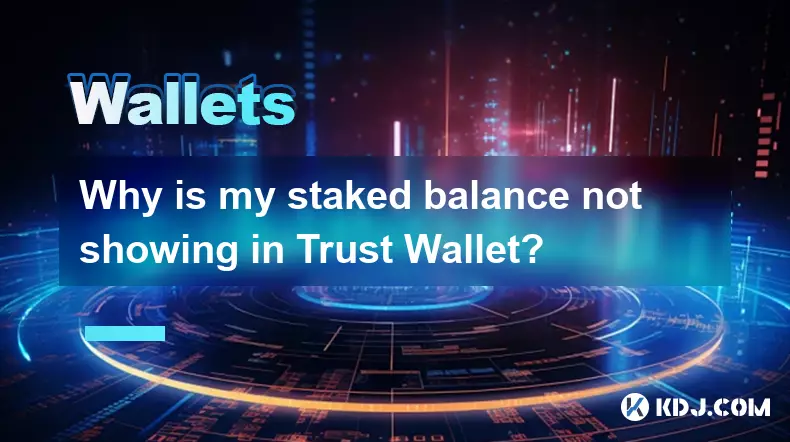
Why is my staked balance not showing in Trust Wallet?
Oct 01,2025 at 12:54am
Understanding Decentralized Exchanges in the Crypto Ecosystem1. Decentralized exchanges (DEXs) operate without a central authority, allowing users to ...
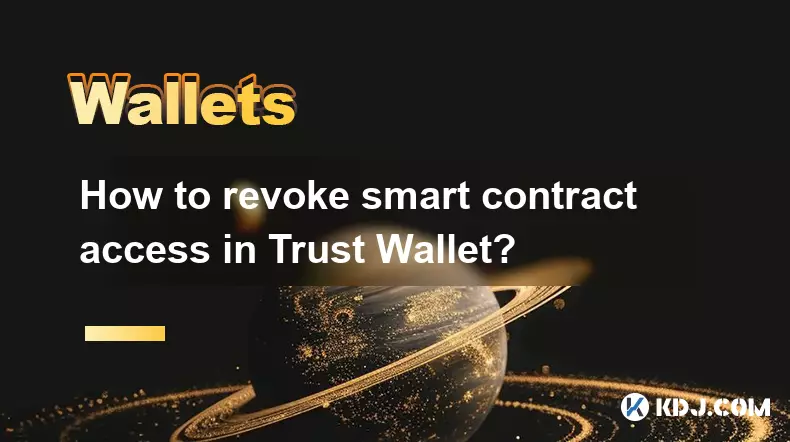
How to revoke smart contract access in Trust Wallet?
Oct 01,2025 at 12:54pm
Understanding Smart Contract Access in Trust Wallet1. Smart contracts are self-executing agreements built on blockchain networks, commonly used in dec...
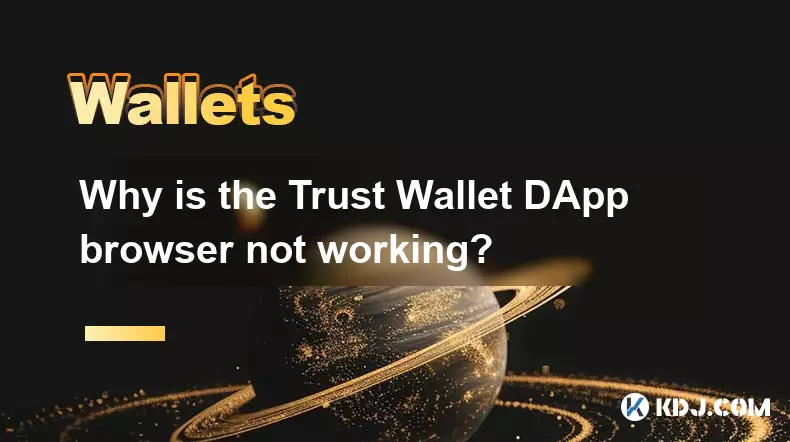
Why is the Trust Wallet DApp browser not working?
Oct 01,2025 at 05:36am
Common Causes of Trust Wallet DApp Browser Issues1. The DApp browser within Trust Wallet may fail to load due to connectivity problems. A weak or unst...
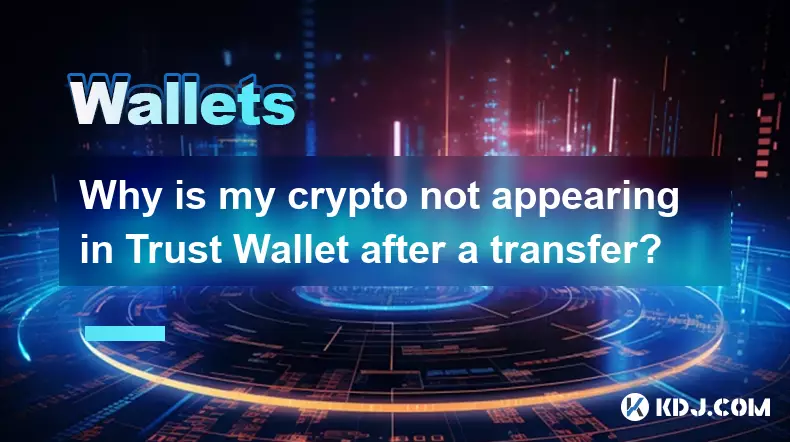
Why is my crypto not appearing in Trust Wallet after a transfer?
Oct 01,2025 at 04:36am
Common Reasons Your Crypto Doesn’t Appear in Trust Wallet1. The transaction is still pending on the blockchain. Blockchain confirmations can take time...
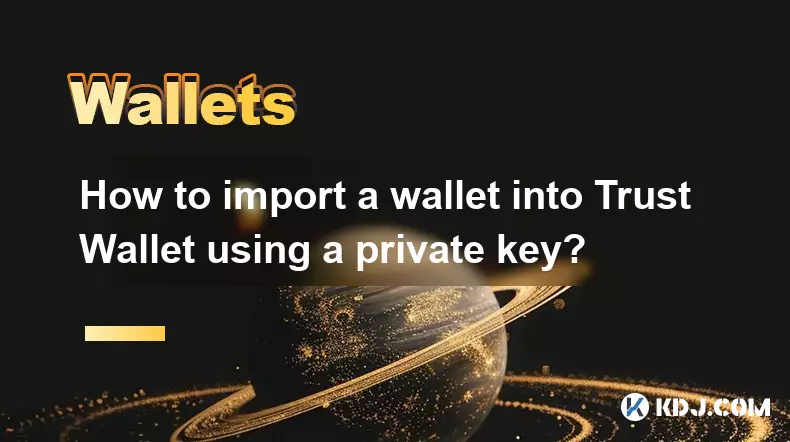
How to import a wallet into Trust Wallet using a private key?
Oct 01,2025 at 09:54am
Understanding Wallet Import via Private Key in Trust Wallet1. Trust Wallet allows users to import existing cryptocurrency wallets using a private key,...

How to get the Trust Wallet browser extension?
Oct 01,2025 at 12:37am
How to Access the Trust Wallet Browser Extension1. Visit the official Trust Wallet website through a secure internet connection. Navigate to the downl...

Why is my staked balance not showing in Trust Wallet?
Oct 01,2025 at 12:54am
Understanding Decentralized Exchanges in the Crypto Ecosystem1. Decentralized exchanges (DEXs) operate without a central authority, allowing users to ...

How to revoke smart contract access in Trust Wallet?
Oct 01,2025 at 12:54pm
Understanding Smart Contract Access in Trust Wallet1. Smart contracts are self-executing agreements built on blockchain networks, commonly used in dec...

Why is the Trust Wallet DApp browser not working?
Oct 01,2025 at 05:36am
Common Causes of Trust Wallet DApp Browser Issues1. The DApp browser within Trust Wallet may fail to load due to connectivity problems. A weak or unst...

Why is my crypto not appearing in Trust Wallet after a transfer?
Oct 01,2025 at 04:36am
Common Reasons Your Crypto Doesn’t Appear in Trust Wallet1. The transaction is still pending on the blockchain. Blockchain confirmations can take time...

How to import a wallet into Trust Wallet using a private key?
Oct 01,2025 at 09:54am
Understanding Wallet Import via Private Key in Trust Wallet1. Trust Wallet allows users to import existing cryptocurrency wallets using a private key,...
See all articles










































































